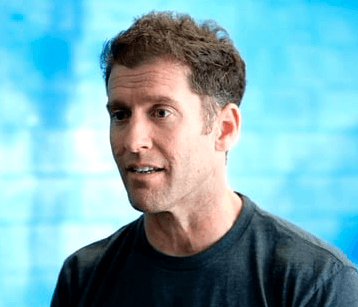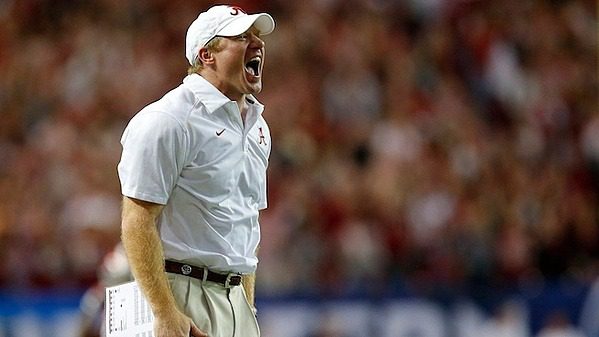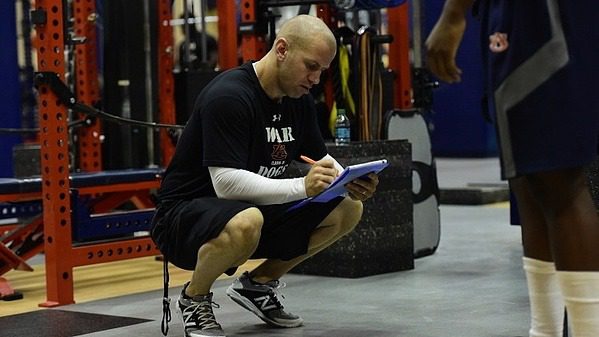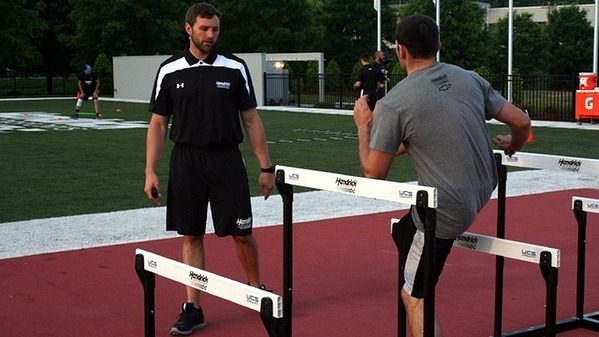The Case for Continual Coaching Development and Education
Coach DevelopmentABOUT THE AUTHOR


Kenny Kane
Kenny Kane holds multiple certifications and is a graduate of SealFit’s Kokoro Camp. The practical and spiritual teachings from Kenny’s diverse athletic training have culminated in his context-driven coaching methodology where body, mind, and heart are given equal weight in the portrait of good health. Kenny has implemented his mind-body training protocol whilst coaching Olympians, NBA players, Premiere League soccer players, A-list celebrities, CrossFit Games athletes, and nine-to- fivers alike. He has also developed and directed several fitness programs for kids, coached an adaptive athlete to compete alongside able-bodied competitors, and continues to contribute to broader philosophical discussions concerning public health in podcasts and other forums with elite athletes, movement and human bioenergetics specialists, and thought leaders from around the world. He is the owner of and head coach at Oak Park, home of CrossFit Los Angeles.
If you’re anything like me, I bet you were on fire those first couple of years – eager to learn everything you could and apply it to help your athletes get better every day.
But somewhere in the years since, perhaps you lost your way. Or it became obscured by all the ancillary tasks that nobody ever told you about at the beginning – like the ins and outs of weekly programming, the ups and downs of managing a team, and the drudgery of maintaining your facility (I hear you – there’s a good reason I outsourced cleaning our gym).

Alabamas-Strength-and-Conditioning-Coach-Makes-More-Money-Than-Many-Head-Coaches-STACK
The pace of keeping up with such daily demands can mean personal and professional growth gets put on the back burner. And if you and your fellow coaches aren’t growing, you’re bound to get bored and every day might begin to seem like a burden.
To avoid this, preserve your enthusiasm, and advance your practice, you need to challenge yourself to learn new things, figure out where they fit in your craft, and integrate them.
In short, it’s time to invest in prioritizing the habit of ongoing education for both you and your clients.
// My Development and Continuing Education
When I say that it’s easy to fall asleep at the wheel as a coach, I’m speaking from personal experience.
If you don’t have systems in place or they’re inefficient, you’re going to get fried because you’ll become stuck in the day-to-day minutiae that I just mentioned. Yet even when you’re able to set up solid systems, that’s not enough. It requires time, attention, and financial resources to maintain them. If you assume that just because something’s working well now it always will and flip on the autopilot switch, you’re going to be in for a rude awakening when events force you to realize your approach has stagnated.
At some point, either market dynamics, cultural shifts, or both are going to overtake you if you’re not keeping up with new trends and remaining adaptable.
That’s exactly what happened at our gym.


The business model that was in place when we opened in 2004 wasn’t working. So we put some new systems in place and focused on an approach based on the martial arts industry that remained sufficiently robust for the next few years. We experienced a lot of growth during that time, but by 2012 a lot of new local competitors had sprung up and the fitness business had undergone radical changes, including massive proliferation of new information, a shift towards video-based content, and subsequent decision fatigue among our client population.
People started getting isolated micro-chunks of information from the internet that created confusion and led some to start questioning if they even needed coaching at all. For many people, it became more about the workouts themselves than the shared experience and coaching relationship.
Anytime there’s a disparity between what you’re trying to offer your clients and what they’re willing to receive, you’re going to struggle with misalignment issues.
It wasn’t until we experienced failure that we had to sit up, take notice, and reevaluate our approach. What we were doing simply stopped working, so we had to find new ways to meet people where they were while preserving our commitment to a high-touch, low-volume, community-focused approach.
This prompted us to develop and introduce the contextual programming I wrote about in a previous post, which we systematized in 2013. While we remain dedicated to this because we believe it synchs up with the undulations of how human beings develop over time in the presence of both decay and growth, maintaining this system is challenging.
Once again, we’re hitting an inflection point.
As part of our business evolution, some clients naturally relate to the necessary changes in the system and some don’t. Even though we’re leading with a dialogue that emphasizes the need to balance skill development and work capacity, some people still expect to feel crushed after every workout, even though that’s not what we believe is best for their long-term progression and durability.
What are we doing about this? Clarifying our vision and communicating what we’re trying to do and why.
This requires doubling down on professional development that increases our value as individual coaches and a coaching team, broadens our skillset, and enables us to show our athletes that we remain committed to empowering their growth.
For us, baking in a long-standing commitment to ongoing education is the way that we will be able to weather change and keep evolving over time, no matter how the market continues to shift beneath our feet.
// Development Step 1: Books for Basic Principles
The first core component of our coaching development is grasping a set of basic principles that inform everything we do as coaches and people. That’s why we came up with a required reading list of five books that give every one of our coaches a philosophical foundation on which to build relationships, systems, and an environment that supports the positive behaviors that help our clients achieve their aims.
1) Start With Why by Simon Sinek
You need to be surrounded by purpose-driven coaches who are passionate about their craft. This can only happen if everyone understands why they’re doing what they’re doing and who they’re serving.
2) Mindset by Carol Dweck
Do you have a fixed or growth mindset? Life and the world around us aren’t static, so our thinking and the systems it informs need to be dynamic and account for change.
3) Tribe by Sebastian Junger
People need a sense of belonging and autonomy, and they need to feel good about what they’re doing. Here’s what this looks like in the context of a tight-knit group that provides accountability and deep connection.
4) Legacy by James Kerr
Kerr’s book traces the unparalleled success of the New Zealand All Blacks to their culture. One of the key lessons is that coaches need to be dedicated to leaving their environment and athletes better off than they found them.
5) To Sell is Human by Daniel H. Pink
The effectiveness of your coaching is only going to go as far as your ability to communicate a compelling narrative. As most decisions in fitness come from a place of weakness, you need to not exploit this but rather honor it for mutual gain.
When combined, these books encourage us to be a purpose-driven coaching team of tribal leaders capable of ongoing personal and professional growth and dedicated to leaving behind a legacy when our time here ends.
// Development Step 2: Practical Application


As valuable as these texts are though, it’s not enough to be book smart. If you’ve truly learned something to the point that you understand it, you need to be able to put this knowledge into action.
We need to fuse principles and practical application together.
That’s why we create sufficient space for our coaches to both pursue greater learning and the opportunities to integrate it into their daily coaching practice.
This is one of the main reasons that we keep every member of the coaching staff on the floor for 15 to 30 hours a week. If you’re working with clients less than 15 hours, you’re a hobbyist, not a professional coach. And if you go much above 30 hours – except the odd occasion when you have to cover for someone who’s sick or on vacation – the quality of your work is going to start to suffer.
We find this range gives our coaches both the hands-on experience they need to grow as teachers and sufficient time to expand their knowledge. It’s a systematized and sustainable way for every one of our coaches to cultivate what Cal Newport calls “deep work” – while still making a good living in Los Angeles.
These 15 to 30 weekly hours are spent on the gym floor coaching one-on-one and in group settings. The other side is training to do this better so that we can unite study, preparation, and execution.
We have two weekly meetings as a group – the first focused on the business and the second on programming and students’ issues.
// Development Step 3: Certifications
Beyond this, we require every member of the coaching staff to complete the same three certifications each year together as a group.
Recently, our focus areas have included mobility, breath work, and the art of coaching. By diving into such educational topics together, we’re able to keep our narrative consistent, so that if a student interacts with four different coaches on a topic, they’re hearing one cohesive story.
That said, we recognize the importance of empowering coaches to be themselves and pursue their own interests, so we encourage them to obtain two additional certifications of their choosing each year, which we pay for.
The mere introduction of new subject matter is additive to the group and helps keep our thinking fresh. It’s all about finding that sweet spot between knowledge and experience because the best coaches have a balance of both and each one continuously feeds the other.
// Development Step #4: Accept Imperfection
If you’re curious about how we convince our students to buy into this approach, get ready for an answer that might surprise you: approximation and imperfection.
When a new client comes to us, we ask them about what they’re hoping to achieve and actively listen to their response. Then we explain that if we do our job as coaches and they play their part by showing up, putting in maximum effort, and supporting what happens at the gym with positive lifestyle choices, we’re going to lead them down a better road.
From that point on, what we share will be mostly right, but still imperfect. That kind of candor might not be business savvy, but it is honest and people respect that. We let each student know that over the course of their relationship with us, they’re going to grow and change as a human, and that we’re all in to support and adapt to this progression.
The imperfect art is the gray area where experience, behaviors, relationships, and environment intersect. We need to make sure that at least three of these four boxes are checked every time someone walks into our gym, otherwise we will fail. And when we do, we try to take lessons from the failure loop to improve and keep things compelling and interesting.


// Making It Your Own
Your focus might not be the same as ours. For example, if you’re working with pro football or rugby players, perhaps you need to concentrate on developing speed, power, agility, and raw strength in your athletes. Whereas if you primarily train endurance athletes, you’ll need to address different physical qualities (not to mention cognitive and emotional ones too). This comes back to context.
But regardless of who your athletes are and their goals, you’ll be best prepared to teach, share with, and develop them sustainably over the long term if you’re committed to investing in your own continued education.
Are you a better coach after reading this?
More coaches and athletes than ever are reading the TrainHeroic blog, and it’s our mission to support them with useful training & coaching content. If you found this article useful, please take a moment to share it on social media, engage with the author, and link to this article on your own blog or any forums you post on.
Be Your Best,
TrainHeroic Content Team
HEROIC SOCIAL
HEROIC SOCIAL
TRAINING LAB
Access the latest articles, reviews, and case studies from the top strength and conditioning minds in the TH Training Lab

